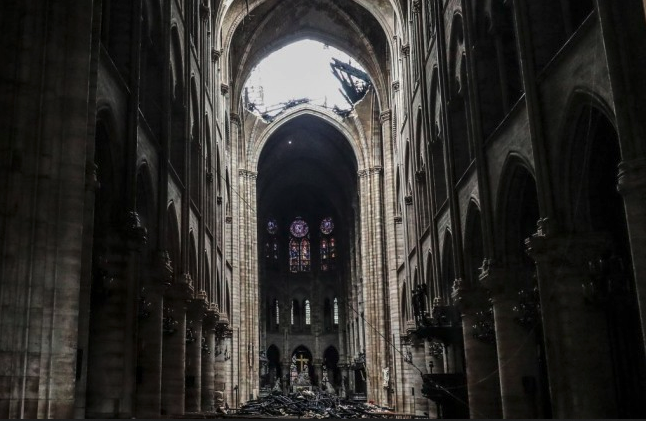
By Miguel Brown
After the Notre Dame Cathedral in Paris burned in 2019, archaeologists have uncovered several tombs from the 14th century in the now “burial site” of “remarkable scientific quality”.
Along with the tombs unearthed was a human-shaped sarcophagus made of lead, ScienceAlert reported. According to the culture ministry, the newly revealed tombs beneath Notre-dame were found during the preparatory and general planning of the restoration works for rebuilding the ancient church
The ministry announced on Monday that the two major discoveries unearthed under the nave and the polychrome fragments of the original 13th-century rood screen of Notre-Dame, will make it possible to document the monument’s history.
The coffin, which was thought to have been made for a senior dignitary in the 1300s, as well as the tombs and some painted sculptures were found just under the current paving level of the cathedral.
During an archaeological visit
On Tuesday, the Agence France-Presse (AFP) and archaeologists visited and delicately excavated sculptures emerging from the ground, including a pair of carved hands, bust of a bearded man, and some sculpted vegetables, with traces of paint.
The team inserted a mini endoscopic camera to peek inside the sarcophagus warped by earth and stones and caught a glimpse of “pieces of fabric, hair and above all a pillow of leaves on top of the head, a well-known phenomenon when religious leaders were buried,” said lead archaeologist Christophe Besnier. “The fact that these plant elements are still inside means the body is in a very good state of conservation,” he noted.
Dominique Garcia of the National Institute of Archaeological Research added that this discovery shed better light on funeral practices in the Middle Ages.
These discoveries happened to be found when reconstruction teams prepared to install huge scaffolding to rebuild the spire, and needed to check the stability of the ground.
A completely preserved anthropomorphic lead sarcophagus
The fully preserved lead sarcophagus was unearthed among the graves in the western part of the excavated site. In the first analysis, archaeologists dated the burial at the latest from the 14th century. Plant remains under the head of the deceased were also identified aside from the hair, fragments of textiles, and organic matter.
The sarcophagus was lying among an underground heating system’s brick pipes from the 19th century. While this find had archaeologists working, they have limited time to do so. The archaeological excavation is just the first step in a study phase and must be completed on the ground on March 25, before the reconstruction project resumes. As for the lead sarcophagus’ removal, it will be carried out in the coming days.
Meanwhile, the sculpted fragments attributed to the 13th century rood screen may be collaborated with the polychromy center of the Historical Monuments Research Laboratory (LRMH), or with the Sculpture Department of the Louvre Museum.
Nonetheless, all the discoveries and every fragment were considered “exceptional interest” for understanding the history of Notre-Dame de Paris – which is proposed to be reopened in 2024, according to CNN.
Complete Article ↪HERE↩!
